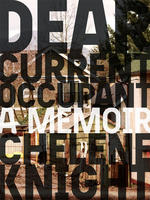Mixed Race Britain in The Twentieth CenturyPosted in Books, History, Media Archive, Monographs, Politics/Public Policy, Social Science, United Kingdom on 2018-05-25 02:20Z by Steven |
Mixed Race Britain in The Twentieth Century
Palgrave Macmilan
2018-05-23
552 pages
26 b/w illustrations
Hardcover ISBN: 978-1-137-33927-0
eBook ISBN: 978-1-137-33928-7
DOI: 10.1057/978-1-137-33928-7
Chamion Caballero, Visiting Senior Fellow
London School of Economics
Peter J. Aspinall, Emeritus Reader
University of Kent, United Kingdom
- Presents a comprehensive history of racial mixing in Britain during the twentieth century
- Contrasts ‘ordinary’ voices sourced from archival material from across the twentieth century with official media and government accounts of racial mixing in Britain
- Formed the foundations of the popular BBC Two television series Mixed Brittannia that explored the history of Britain’s mixed-race community
This book explores the overlooked history of racial mixing in Britain during the course of the twentieth century, a period in which there was considerable and influential public debate on the meanings and implications of intimately crossing racial boundaries.
Based on research that formed the foundations of the British television series Mixed Britannia, the authors draw on a range of firsthand accounts and archival material to compare ‘official’ accounts of racial mixing and mixedness with those told by mixed race people, couples and families themselves.
Mixed Race Britain in The Twentieth Century shows that alongside the more familiarly recognised experiences of social bigotry and racial prejudice there can also be glimpsed constant threads of tolerance, acceptance, inclusion and ‘ordinariness’. It presents a more complex and multifaceted history of mixed race Britain than is typically assumed, one that adds to the growing picture of the longstanding diversity and difference that is, and always has been, an ordinary and everyday feature of British life.
Table of contents
- Introduction; Caballero, Chamion (et al.)
- ‘Disharmony of Physical, Mental and Temperamental Qualities’: Race Crossing, Miscegenation and the Eugenics Movement; Caballero, Chamion (et al.)
- Mixed Race Communities and Social Stability; Caballero, Chamion (et al.)
- ‘Unnatural Alliances’ and ‘Poor Half-Castes’: Representations of Racial Mixing and Mixedness and the Entrenching of Stereotypes; Caballero, Chamion (et al.)
- Fitting In and Standing Out: Lived Experiences of Everyday Interraciality; Caballero, Chamion (et al.)
- ‘Tan Yanks’, ‘Loose Women’ and ‘Brown Babies’: Official Accounts of Mixing and Mixedness During the Second World War; Caballero, Chamion (et al.)
- ‘Undesirable Element’: The Repatriation of Chinese Sailors and Break Up of Mixed Families in the 1940s; Caballero, Chamion (et al.)
- Conviviality, Hostility and Ordinariness: Everyday Lives and Emotions in the Second World War and Early Post-war Years; Caballero, Chamion (et al.)
- Redefining Race: UNESCO, the Biology of Race Crossing, and the Wane of the Eugenics Movement; Caballero, Chamion (et al.)
- The Era of Mass Immigration and Widespread Population Mixing; Caballero, Chamion (et al.)
- ‘Would You Let Your Daughter Marry a Black Man?’: Representation and Lived Experiences in the Post-war Period; Caballero, Chamion (et al.)
- The Emergence of the ‘New Wave’: Insider-Led Studies and Multifaceted Perceptions; Caballero, Chamion (et al.)
- Social Acceptance, Official Recognition, and Membership of the British Collectivity; Caballero, Chamion (et al.)
- A Postscript to the Twentieth Century: Mainstream and Celebrated Limitations, and Counter-narratives; Caballero, Chamion (et al.)





